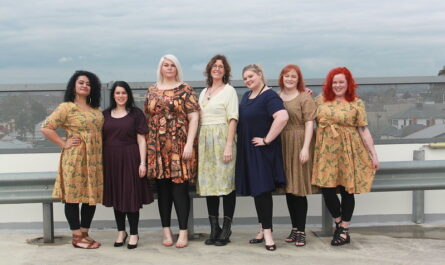In today’s world, where media and social networks often present narrow standards of beauty, developing body confidence and embracing self-acceptance can seem like daunting tasks. However, the journey to loving and accepting your body is a deeply personal one, built on self-awareness, realistic goal-setting, and consistent self-care. By setting realistic goals and staying motivated, you can create a sustainable pathway to body confidence that is not only about physical appearance but also about mental, emotional, and overall well-being.
This comprehensive guide explores practical strategies to set achievable goals, maintain motivation, and celebrate your progress on the journey to self-acceptance. Whether you’re looking to improve your self-esteem, adopt healthier habits, or simply cultivate a more positive relationship with your body, the following insights and tips will help you move forward with confidence and compassion.
1. Understanding the Journey to Body Confidence
A. Redefining Body Confidence
Body confidence is more than simply liking your reflection; it’s about embracing your unique physical form, understanding your body’s strengths, and accepting its imperfections. It involves shifting your focus from external validation to internal self-worth. True body confidence is built on a foundation of self-compassion, resilience, and the willingness to set personal goals that reflect your authentic needs.
- Beyond Appearance: Body confidence isn’t just about how you look—it’s about how you feel in your own skin, how you move through the world, and how you honor your body’s needs.
- Emotional Well-Being: Building body confidence positively impacts mental health. When you accept and appreciate your body, you experience reduced anxiety, improved mood, and a greater sense of inner peace.
- Empowerment: Recognizing your body as a source of strength and resilience can empower you to pursue your goals and live life more fully.
B. The Importance of Setting Realistic Goals
Setting realistic goals is crucial because it transforms an abstract desire for self-improvement into actionable steps. Unrealistic goals often lead to disappointment, frustration, and a sense of failure. In contrast, achievable goals provide clear direction, a sense of accomplishment, and continuous motivation.
- Small Wins Matter: Each small victory on your journey reinforces your self-belief and builds momentum for bigger changes.
- Personalized Goals: Your goals should reflect your unique body, lifestyle, and values. What works for one person might not work for another, so customize your objectives to suit your individual needs.
- Measurable Progress: Establishing clear benchmarks allows you to track your progress over time, celebrate achievements, and adjust your approach as necessary.
2. Setting Realistic Goals: A Step-by-Step Approach
A. Self-Reflection: Knowing Your Starting Point
Before you set any goals, it’s essential to take stock of where you are. Reflect on your current feelings, habits, and experiences related to your body image and self-care. Journaling can be a powerful tool in this process.
- Daily Journaling: Write about your feelings, challenges, and successes regarding body image. Over time, you’ll notice patterns and triggers that inform your goal-setting.
- Identify Your Strengths: Acknowledge the parts of your body and personality that you appreciate. This positive reinforcement builds a foundation of self-love.
- Recognize Challenges: Understand the areas where you struggle—whether it’s negative self-talk, unhealthy habits, or external pressures. Identifying these challenges helps you set specific, realistic goals to address them.
B. Define Clear, Achievable Goals
Once you have a good sense of your starting point, define what you want to achieve. Ensure that your goals are specific, measurable, attainable, relevant, and time-bound (SMART).
- Specific: Rather than setting a vague goal like “I want to feel better about my body,” narrow it down to something concrete. For example, “I want to establish a daily self-care routine that includes 10 minutes of mindfulness meditation and journaling.”
- Measurable: Determine how you will track your progress. Will you use a journal, a mood tracker, or regular self-assessments?
- Attainable: Set goals that challenge you but are also realistic. If you’re new to self-care, start with short, manageable sessions rather than aiming for an hour-long practice immediately.
- Relevant: Your goals should align with your broader vision of self-acceptance and well-being. They should be meaningful to you and reflect your personal values.
- Time-Bound: Give yourself a timeline to achieve each goal. This not only creates a sense of urgency but also allows for regular reviews and adjustments.
C. Break Goals into Manageable Steps
Large goals can feel overwhelming. Breaking them down into smaller, manageable steps makes the process less daunting and more achievable.
- Short-Term vs. Long-Term: Identify what you can achieve in the next week or month versus what may take several months or even years. For example, a short-term goal might be to practice daily affirmations for one week, while a long-term goal might be to develop a comprehensive self-care plan.
- Daily Habits: Focus on building small, consistent habits that contribute to your larger goals. These might include drinking more water, engaging in daily physical activity, or spending a few minutes reflecting on what you appreciate about your body.
- Milestones: Celebrate milestones along the way. Each small success is a step toward greater body confidence and should be acknowledged as progress.
3. Staying Motivated on Your Journey
A. Create a Supportive Environment
A supportive environment is essential for staying motivated. Surround yourself with people, tools, and spaces that encourage positive self-reflection and healthy habits.
- Positive Influences: Seek out friends, family members, or online communities that uplift you. Sharing your journey with others can provide encouragement, accountability, and inspiration.
- Inspirational Spaces: Curate spaces in your home where you feel comfortable and confident. This might be a dedicated corner for meditation and journaling or simply a well-lit area where you can reflect.
- Professional Support: Consider working with a coach or therapist who specializes in body image and self-esteem. Professional guidance can offer personalized strategies and a safe space to explore your feelings.
B. Track Your Progress and Celebrate Successes
Keeping a record of your progress is a powerful motivator. It allows you to see how far you’ve come and reinforces that your efforts are making a difference.
- Journaling and Mood Tracking: Use a journal to record your daily experiences, noting any positive changes or recurring challenges. A mood tracker can help visualize improvements in your overall well-being.
- Visual Reminders: Create a vision board or a progress chart that highlights your goals and achievements. Display it somewhere visible to remind you of your journey and keep you focused.
- Celebrate Milestones: Reward yourself when you reach a milestone. Whether it’s a small treat, a day off, or an indulgent self-care session, celebrating successes reinforces positive behavior and builds momentum.
C. Stay Flexible and Adaptable
The journey to body confidence is not always linear. There will be ups and downs, and it’s important to stay adaptable and flexible.
- Reevaluate Your Goals: Periodically review your goals and adjust them if necessary. As you grow and learn, your needs may change, and your goals should evolve accordingly.
- Learn from Setbacks: Instead of viewing setbacks as failures, treat them as opportunities to learn. Reflect on what didn’t work and how you can modify your approach moving forward.
- Practice Self-Compassion: Remember that change takes time. Be gentle with yourself and acknowledge that every step, even small ones, is progress. Self-compassion is key to maintaining motivation during challenging times.
4. Practical Strategies and Techniques for Self-Expression
A. Daily Affirmations
Daily affirmations are a simple yet powerful tool for reinforcing positive self-beliefs. Start your day by speaking or writing affirmations that remind you of your worth and beauty.
- Examples:
“I am confident and worthy of love.”
“I honor my body and treat it with kindness.”
“Every day, I grow stronger and more self-assured.”
These affirmations can reframe negative self-talk and set a positive tone for the day.
B. Mindfulness and Meditation
Mindfulness practices, including meditation, help you stay present and reduce anxiety. They allow you to focus on the here and now, rather than worrying about imperfections or future uncertainties.
- Simple Techniques:
Spend 5-10 minutes each morning meditating on your breath. Notice any sensations in your body without judgment, and gradually build a practice that helps you stay grounded. - Guided Meditations:
Consider using apps or online resources that offer guided meditations focused on self-acceptance and body positivity.
C. Vision and Goal Setting Exercises
Develop a clear vision of what body confidence means to you. This might involve creating a personal mission statement or setting specific, achievable goals related to your physical and emotional well-being.
- Vision Boards:
Create a board filled with images, quotes, and ideas that inspire you to embrace your body. Display it in a place where you can see it every day. - Goal-Setting Sessions:
Regularly set aside time to review and update your goals. This reflection process helps ensure that your objectives remain relevant and motivating.
D. Self-Care Rituals
Integrating self-care into your daily routine is crucial for sustaining body confidence. These rituals reinforce that your well-being is a priority and help you cultivate a positive relationship with your body.
- Physical Self-Care:
Engage in activities that nourish your body, such as regular exercise, healthy eating, and sufficient sleep. - Emotional Self-Care:
Practice activities that soothe your mind, like journaling, listening to music, or spending time in nature. - Beauty and Grooming:
Treat yourself to small indulgences—whether it’s a skincare routine, a relaxing bath, or a new outfit—that make you feel good about yourself.
5. The Role of Support Networks
A. Lean on Loved Ones
Building body confidence and self-acceptance is not a journey you have to take alone. Your friends, family, and community can provide valuable support and encouragement.
- Open Conversations:
Share your goals and struggles with trusted individuals who can offer empathy and perspective. - Accountability Partners:
Consider partnering with someone who shares similar goals. Regular check-ins and shared progress can help keep both of you motivated. - Positive Social Circles:
Surround yourself with people who celebrate you for who you are, rather than focusing on appearances or unrealistic standards.
B. Professional Guidance
If you find that self-doubt and negative self-image are persistent barriers, seeking professional help can be immensely beneficial. Therapists, life coaches, and counselors specializing in body image issues can offer strategies tailored to your needs.
- Therapy:
A professional therapist can help you explore the root causes of your insecurities and develop healthier thought patterns. - Workshops and Support Groups:
Participating in body positivity workshops or joining support groups can provide community and shared experiences that reinforce your journey toward self-acceptance.
6. Overcoming Challenges and Staying Committed
A. Dealing with Setbacks
No journey is without setbacks. There will be days when negative thoughts creep in or when you feel that progress has stalled. It’s important to remember that setbacks are a natural part of any transformative process.
- Reframe Setbacks:
Instead of viewing setbacks as failures, see them as opportunities to learn and grow. Reflect on what triggered the setback and how you can adjust your approach. - Small, Incremental Changes:
Focus on making gradual improvements rather than trying to achieve perfection overnight. Celebrate each small victory along the way. - Self-Reflection:
Regularly revisit your journal or progress tracker to remind yourself of how far you’ve come. Recognize that every challenge you overcome builds resilience and strength.
B. Keeping the Momentum Going
Staying motivated over the long term requires continuous effort and a commitment to self-improvement. Incorporate strategies that keep you inspired and remind you of your worth.
- Regular Review:
Set aside time each month to reflect on your progress and adjust your goals. This ensures that your objectives remain aligned with your evolving needs. - Celebrate Successes:
Reward yourself for milestones achieved, whether it’s through a small treat, a day of relaxation, or sharing your progress with supportive friends. - Mix Up Your Routine:
Change your self-care or fitness routine periodically to keep things fresh and exciting. Trying new activities can reignite your passion and prevent boredom. - Visual Reminders:
Keep a vision board or a list of affirmations where you can see them daily. Visual cues can serve as powerful reminders of your commitment and progress.
7. Real-Life Stories of Transformation
A. A Journey from Self-Doubt to Self-Love
Consider the story of a young professional who struggled with body image issues for years. Through daily journaling, mindfulness practices, and setting small, achievable goals, she gradually shifted her perspective. Over time, she learned to appreciate her body not just for its appearance, but for its strength and resilience. Her journey was marked by moments of vulnerability, learning, and eventual empowerment—a transformation that inspired those around her and redefined her relationship with her own body.
B. The Impact of Community and Professional Support
Another inspiring example comes from a couple who worked together to build each other’s confidence. By establishing regular check-ins, engaging in open dialogue about their insecurities, and even attending couples’ therapy, they were able to overcome recurring conflicts and develop a deeper, more empathetic connection. Their success demonstrates that with the right support systems in place—both personal and professional—navigating the complexities of self-acceptance is not only possible but also profoundly rewarding.
C. Embracing Imperfection: Lessons Learned
Many individuals have shared their stories of learning to embrace their imperfections. For instance, one individual noted that the practice of daily affirmations and journaling helped him to see his body as a work of art—a unique blend of strength, beauty, and individuality. Over time, he transformed his self-critical thoughts into messages of empowerment, allowing him to pursue his passions with newfound confidence. His story, like many others, underscores the transformative power of self-compassion and realistic goal-setting.
8. Moving Forward: A Roadmap to Self-Acceptance
A. Continuous Growth and Adaptability
Your journey to self-acceptance is ongoing. As you set realistic goals and stay committed to your self-care routines, remember that growth is a continuous process. Your needs may change over time, and it’s important to remain flexible and adaptable.
- Regular Self-Assessment:
Periodically assess your progress. What worked well? What could be improved? This reflective practice will help you adjust your goals and maintain momentum. - Embrace Change:
Recognize that change is a natural part of life. Allow yourself the freedom to evolve and redefine what body confidence means to you. - Celebrate Your Uniqueness:
Your journey is uniquely yours. Celebrate your individuality and the progress you’ve made, no matter how small. Every step forward is a testament to your resilience and strength.
B. Creating a Legacy of Self-Love
By focusing on your personal journey toward self-acceptance, you’re not only improving your own life—you’re also setting an example for others. Sharing your experiences, challenges, and successes can inspire those around you to embark on their own journeys of self-discovery and body confidence.
- Community Engagement:
Consider joining or creating a community—online or in person—where you can share insights and support one another. Collective experiences can enhance your motivation and provide a sense of belonging. - Advocacy:
Use your journey as a platform to advocate for body positivity and mental health awareness. Whether through social media, blogs, or local events, your story can inspire others to embrace their uniqueness and pursue self-love. - Legacy Projects:
Document your journey through a blog, video series, or social media account. Not only will this serve as a personal record, but it can also be a source of inspiration for others seeking to build body confidence and overcome insecurities.
9. Conclusion: Your Path to a More Confident, Fulfilled Self
Expressing your needs and desires in a relationship without feeling guilty is a vital component of cultivating self-confidence and building a healthy, nurturing partnership. The journey to body confidence and self-acceptance is personal and multifaceted—it’s about setting realistic goals, embracing your unique strengths, and nurturing both your body and mind.
Through practices like daily affirmations, mindfulness, journaling, and open dialogue, you can create a roadmap that guides you toward a more empowered and balanced life. Every small step—every honest conversation, every moment of self-reflection, and every victory over self-doubt—builds the foundation for lasting confidence and genuine self-love.
As you continue on this journey, remember that progress is not linear. There will be ups and downs, challenges and breakthroughs. Embrace each moment as part of your growth, and never lose sight of your inherent worth. The tools and strategies discussed in this guide are here to help you navigate the complexities of self-acceptance, reminding you that true beauty lies in embracing your authentic self.
Your journey toward body confidence is a lifelong adventure—a path marked by continuous learning, resilience, and the unwavering belief that you are deserving of love and respect. By setting realistic goals and maintaining a compassionate dialogue with yourself and your partner, you can create a legacy of self-love that not only transforms your own life but also inspires those around you.
So, take a deep breath, pick up your journal, and start embracing the journey to self-acceptance. Celebrate your progress, learn from your setbacks, and remember that every step forward is a victory. In the end, it’s not just about reaching a destination—it’s about growing into the best version of yourself and living a life that is as fulfilling as it is authentic.



